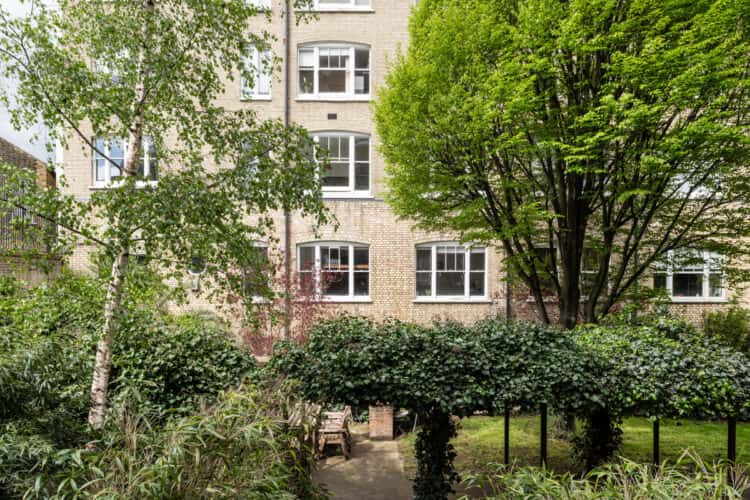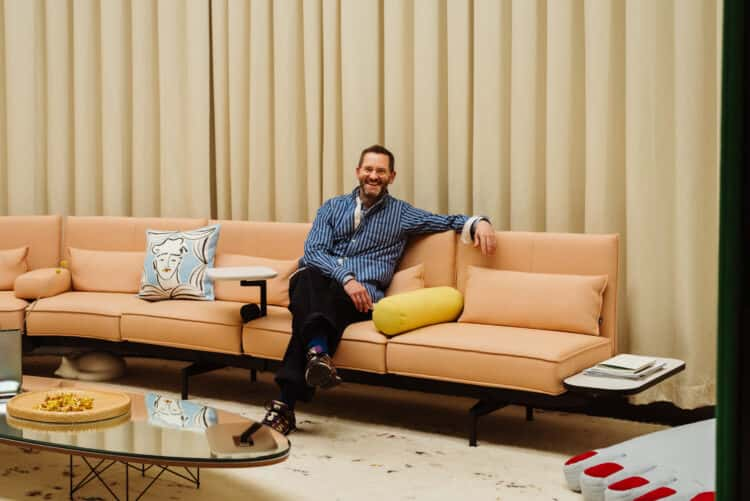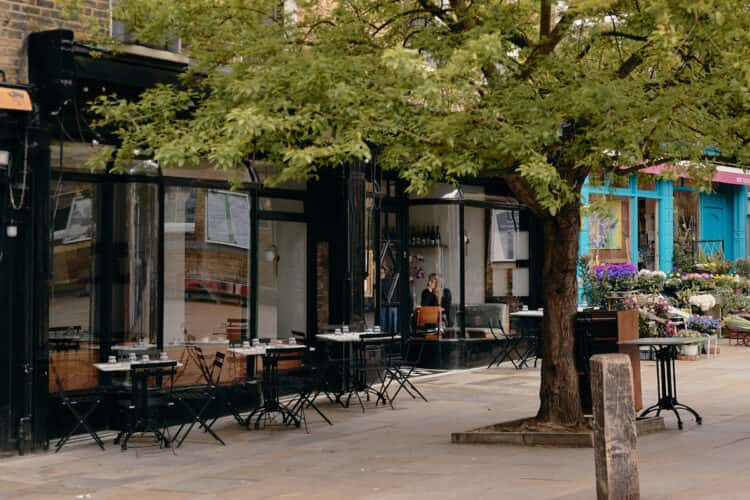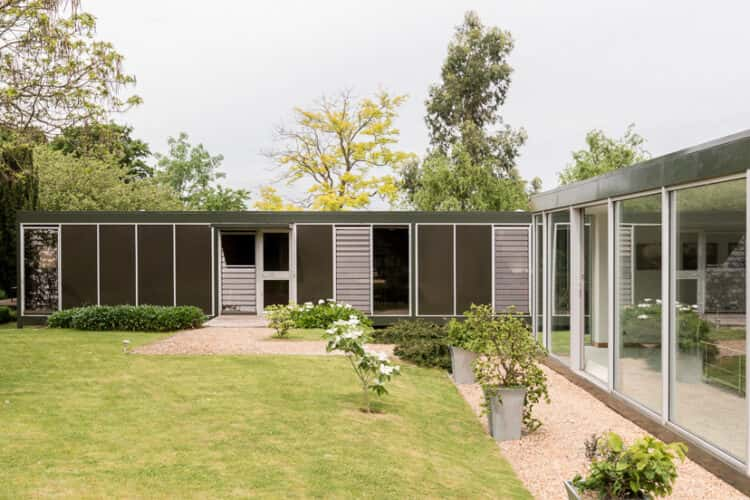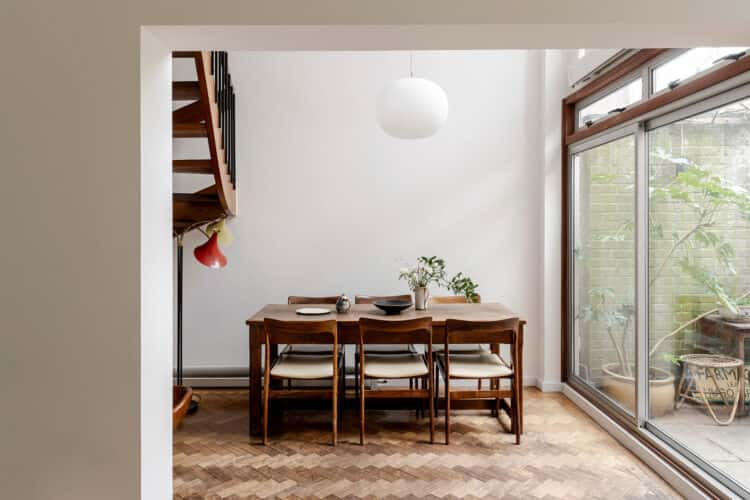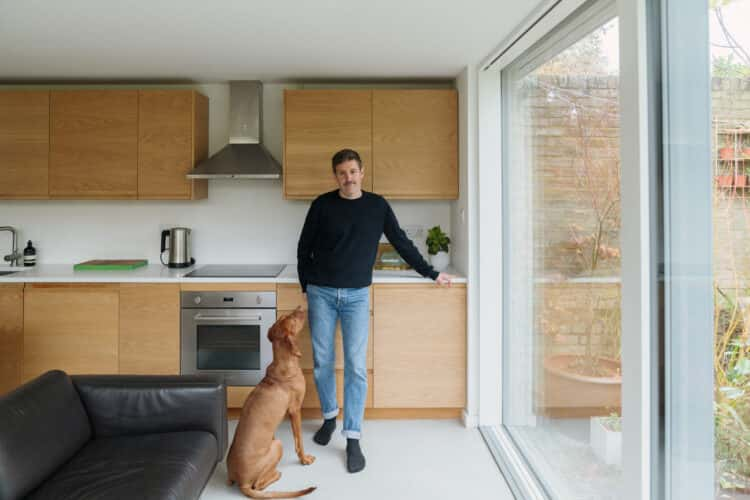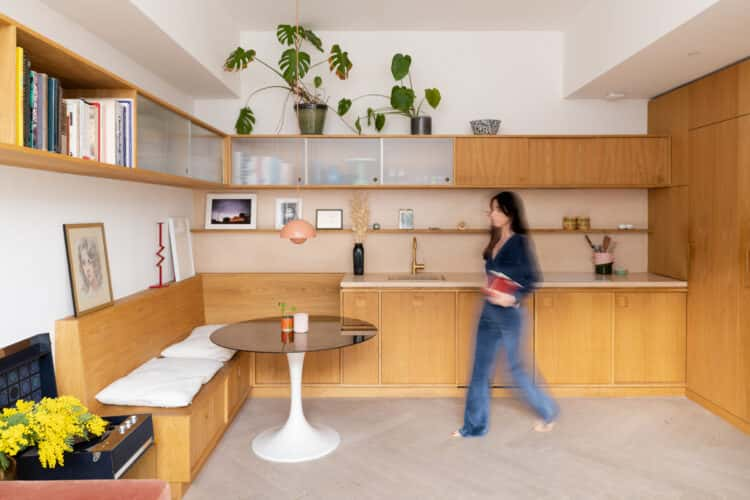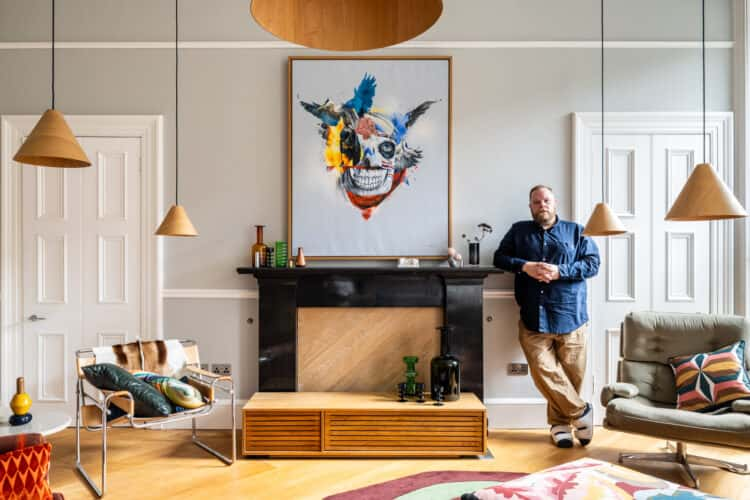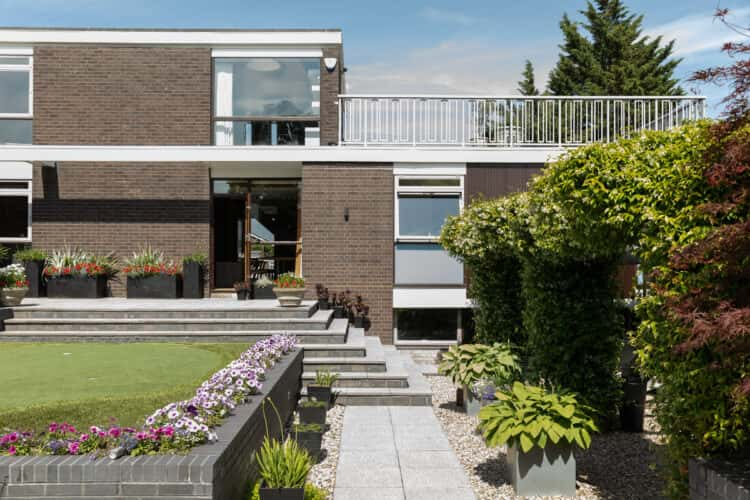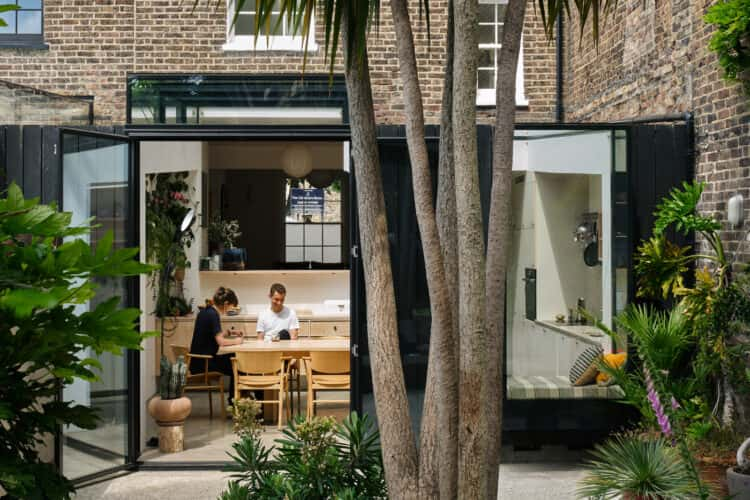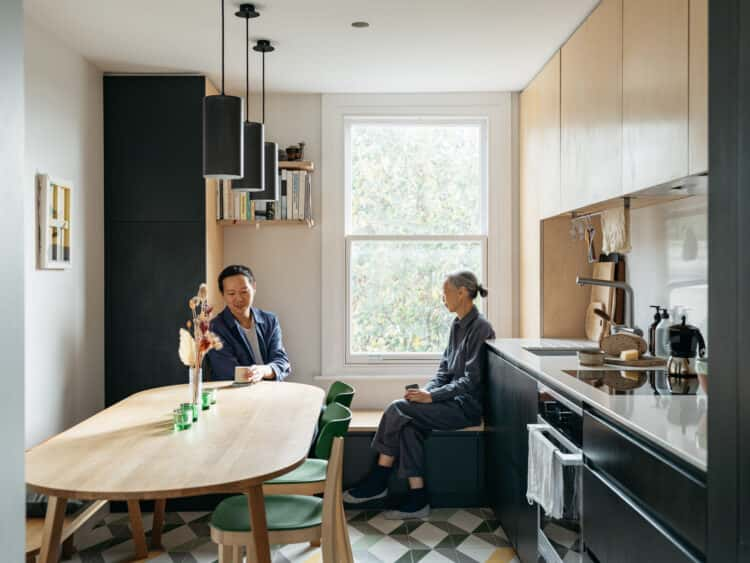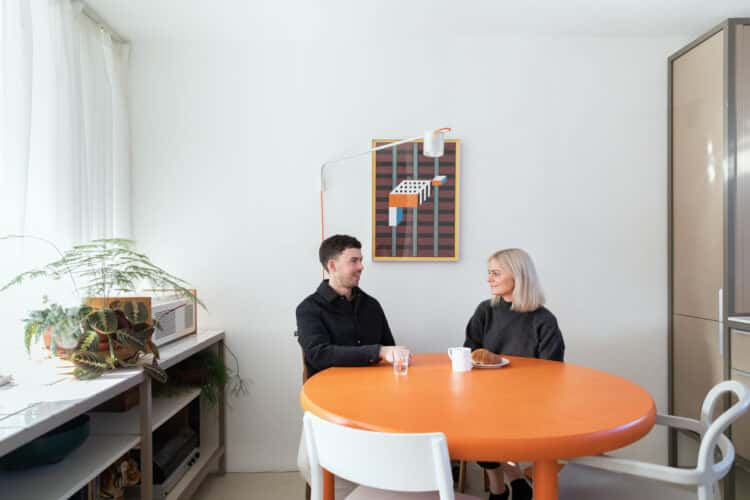Mia Castenskjold and Stefan Zschernitz’s self-built sanctuary in Hackney

Over the following four years, the couple worked intermittently on the new apartment, knocking down walls and creating warm, textured interiors that now fully embrace the tranquil communal garden outside. By removing time pressures and doing all the work themselves, they were able to source sustainable materials without compromising on quality. The result is a light-filled flowing home furnished with handcrafted objects and bespoke furniture designed to fit the space. Now, as it comes on the market and they make the move to Mia’s native Denmark, we find out what that project was like for the couple. Did they enjoy the process and are they ready to do it all again?
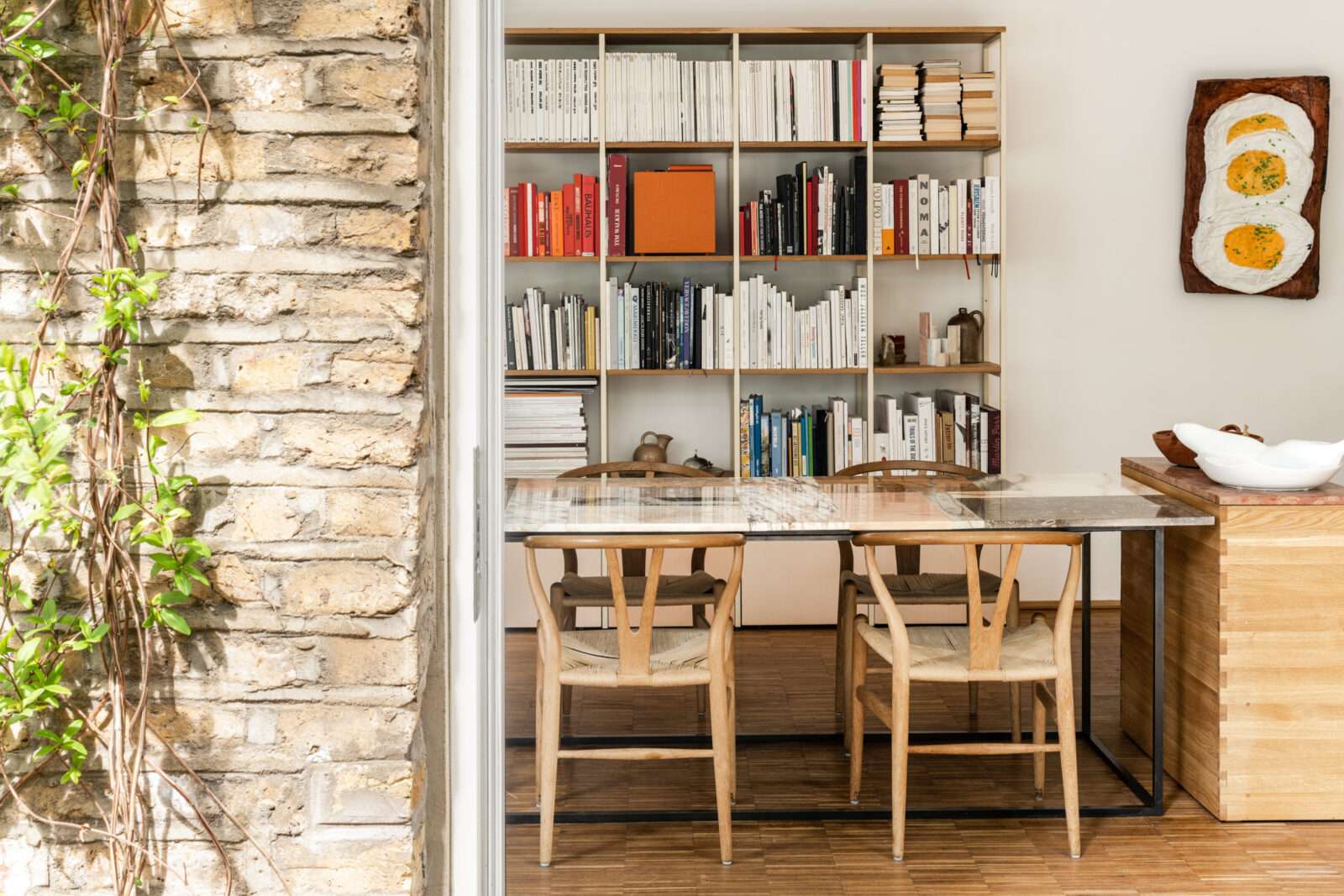
Mia: “Although we had lived in Hackney for more than a decade, we didn’t even know this little part of it. It feels quite a secret and hidden.”
Stefan: “We were living in a rental when we started searching for somewhere to buy. We found it to be quite an overwhelming process – it was at least six months before we saw this place. We decided to stay in Hackney, even though it meant buying a one-bed flat we knew we would eventually outgrow.”
Mia: “We viewed the apartment in the winter and, to be honest, it wasn’t an appealing space. I remember walking in and just seeing walls and doors everywhere. The previous owners had covered the windows in dark velvet curtains and the floor was dark laminate. It just felt like a cave.”
Stefan: “The two residential buildings here originally functioned as warehouses in the 1920s before being converted into 36 flats in the 1990s. Each flat is different, but many of them have retained their high ceilings and original parquet floors. There are also beautiful internal iron pillars that run right through the building, so it’s really quite special.”
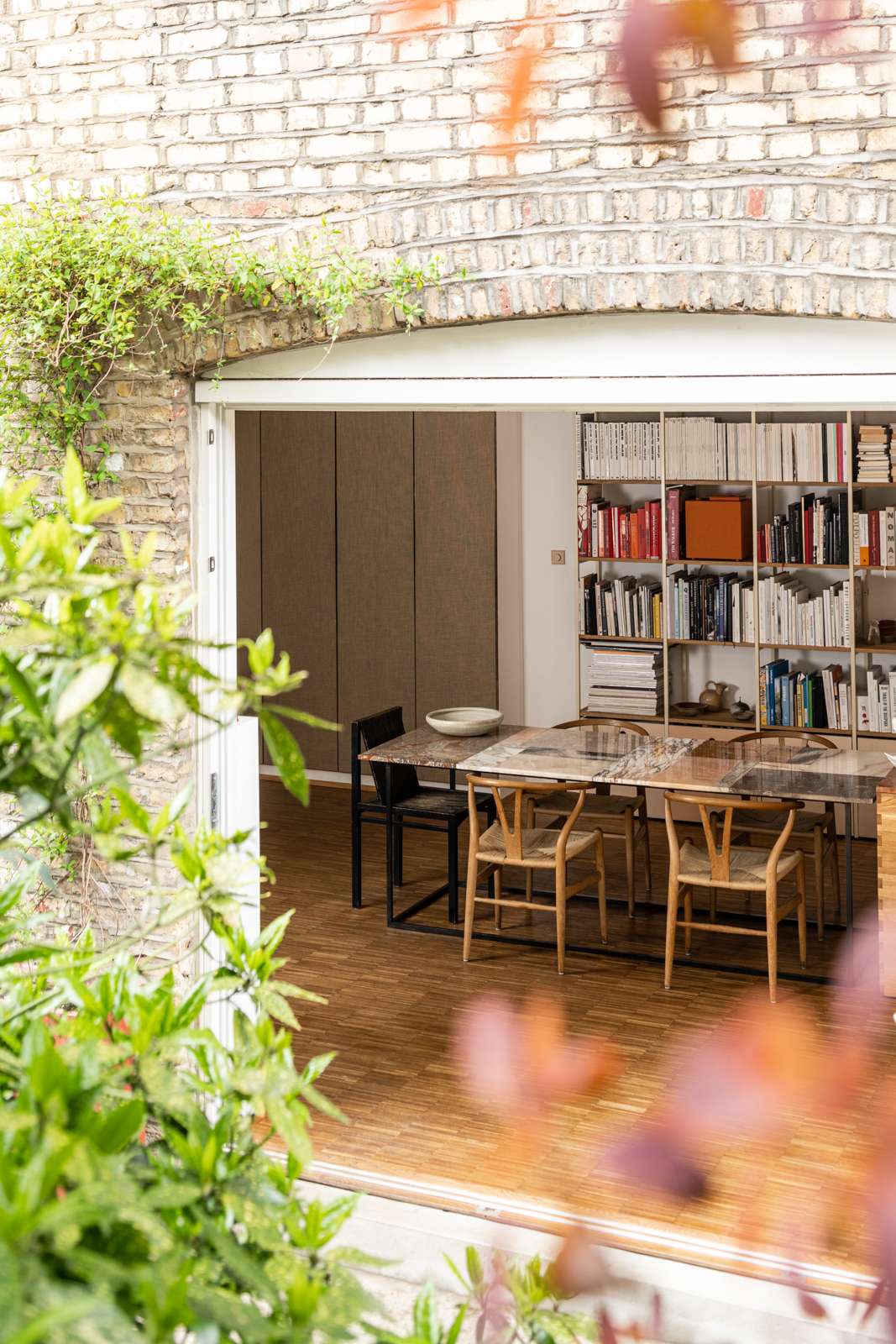
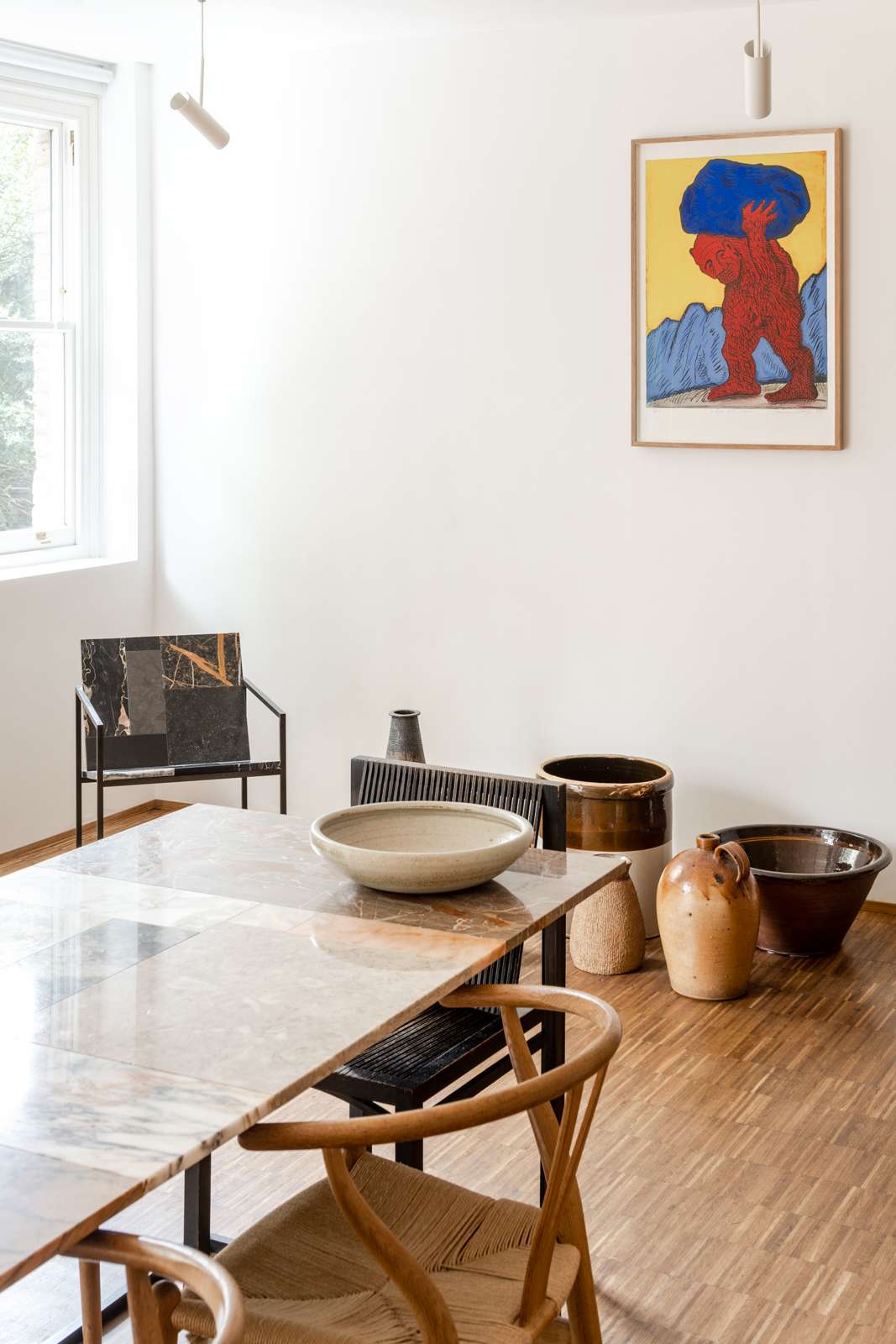
Mia: “We knew from the beginning that we wanted to transform it into an open living space with fewer walls and doors and with direct access to the communal garden. We’d done quite a lot of work to our rental, so we knew what would be involved.”
Stefan: “As Alva was a newborn when we moved in, the plan was to live here for a while before starting the renovation work. However, when the survey came back, we realised that the bathroom was damp and needed replacing. Since we were going to have to rip that out, we decided to take down most of the walls at the same time. It was intense, as we were living in what was effectively a building site with a baby. At the same time, we were working on the launch of Marble.Partners. We didn’t have a proper bathroom for the first month. I don’t think we’ll ever do that again…”
Mia: “It was chaotic. Stefan was doing all the work himself, so although we weren’t dependent on other people, we had to spread it out, working and saving before undertaking the next phase. In total, the renovation took about four years. The whole experience was a learning curve.
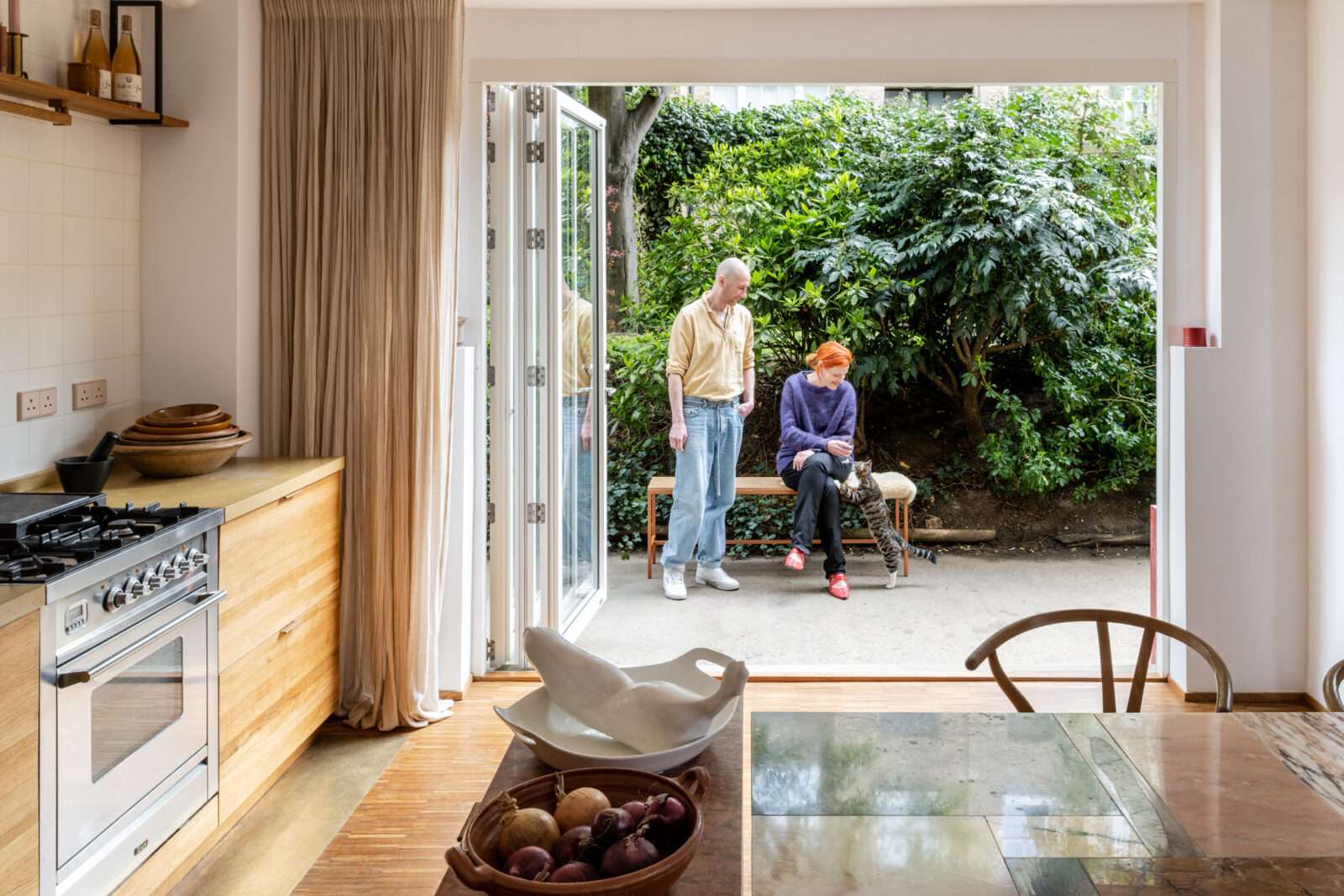
“Stefan is German and I’m Danish. When we first met, we spent a lot of time talking about where we grew up and the spaces that had influenced us. We found we had a common design language. Our aesthetic combines both Danish and German principles of design and manufacturing. During the build, this set us on a journey. What we realised when we started looking at the materials we were using was that Stefan was making a lot of references to his old Steiner school, which was built in Germany by Danish architects.”
Stefan: “I wasn’t really aware of this until we visited the school in Hanover. Then, suddenly I realised that this is where it was all coming from…”
Mia: “From the outset, we knew we wanted to make material choices that were cost-efficient without compromising on quality, so we only used offcuts and salvaged marble. The oak floor, for instance, is made of leftovers from parquet production, while the bathroom sink is hand-carved from a slab of white marble that was once meant to be a headstone. The palette is made up of rich, warm neutrals, oranges and reds, which go really well with the greenery outside. In fact, the garden has become an extension of our home. All three of us – and our cat – love the outdoors, so you can imagine the excitement we felt when we found a bi-fold door that was Danish designed and engineered in Germany…”
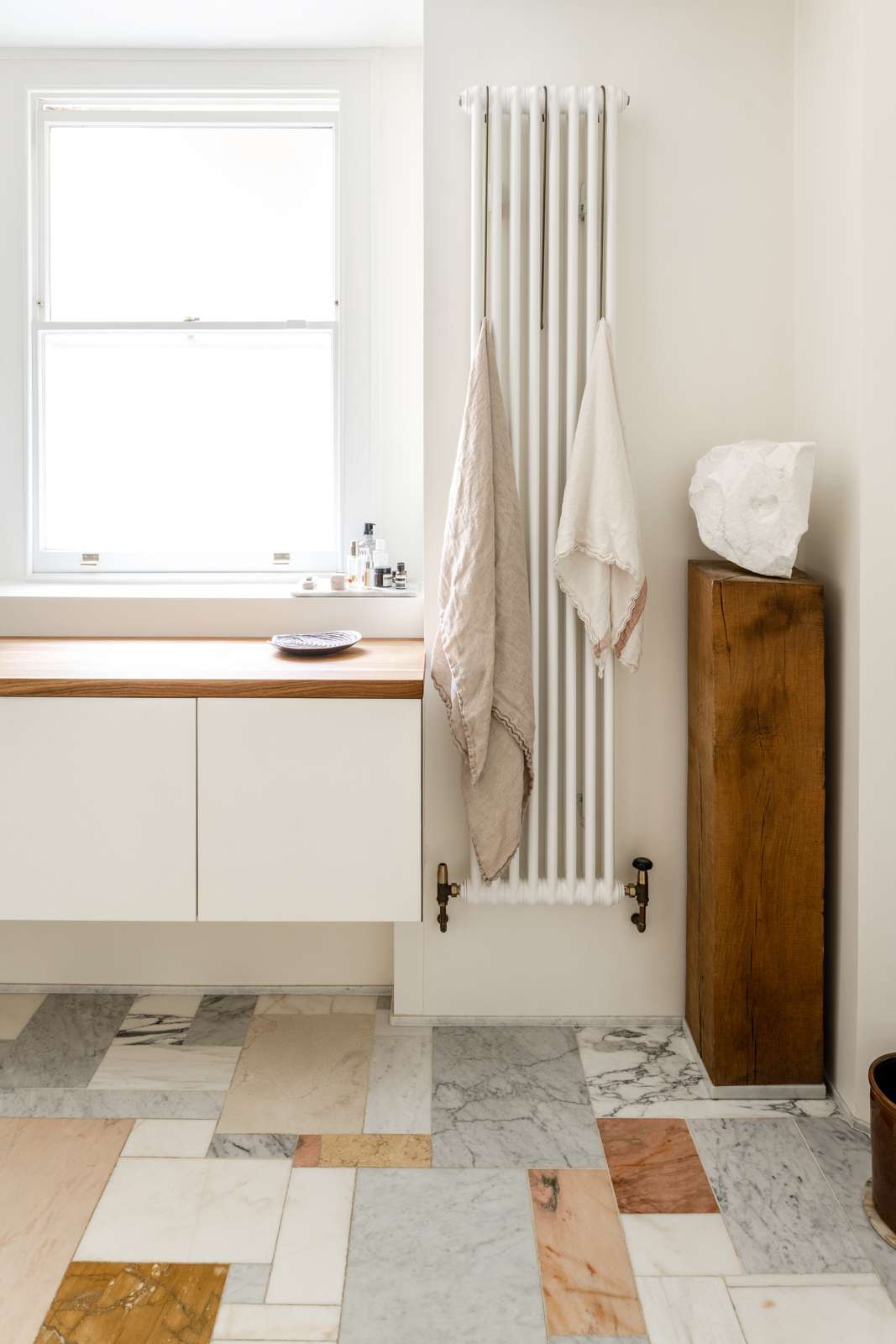
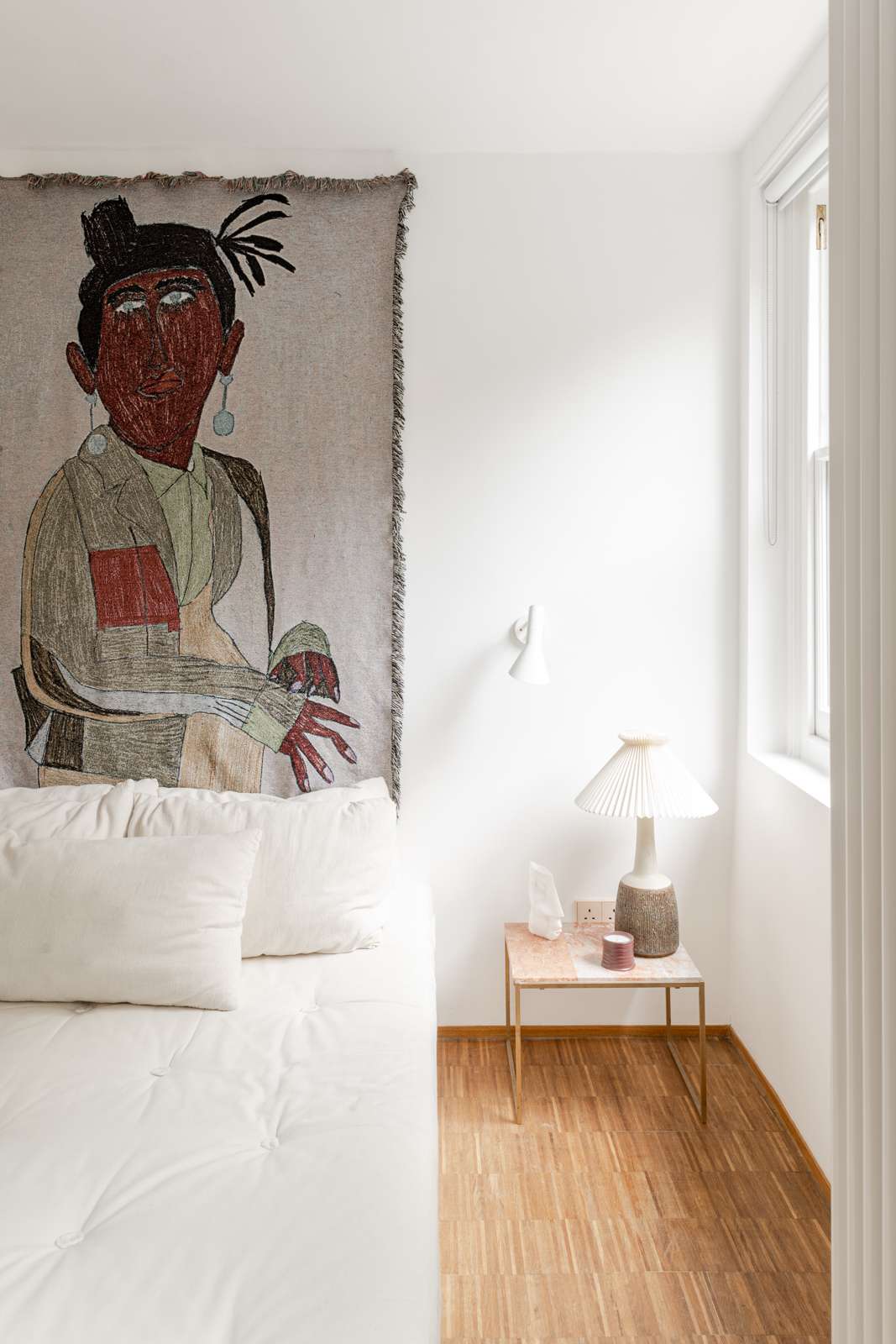
Stefan: “Funnily enough, when we first moved in, our flat was the only one on the ground floor that didn’t have the garden as its main entrance. Our main entrance was from the street and wasn’t even any access to the garden from the flat itself. When we eventually got planning permission to create access, it completely changed the feel of the space. In the summer, the door basically stays open and our daughter runs in and out all day. The garden has become like an extra room and we now use the garden entrance as our main entrance. It’s a much nicer way to enter the space.”
Mia: “We realised that the industrial furniture that came with us from our old flat didn’t complement the space, so we sold most of it on eBay or gave it to friends. Gradually, Stefan made everything in our home himself: the cupboards, the shelving system, the kitchen, the dining table… He even handcrafted the nesting tables specifically for the space. The artwork is also very meaningful to us. The 3D egg sandwich next to the kitchen is a piece by my father and we’ve gathered a lot of Danish ceramics over the years, some of which were made by my mother.”
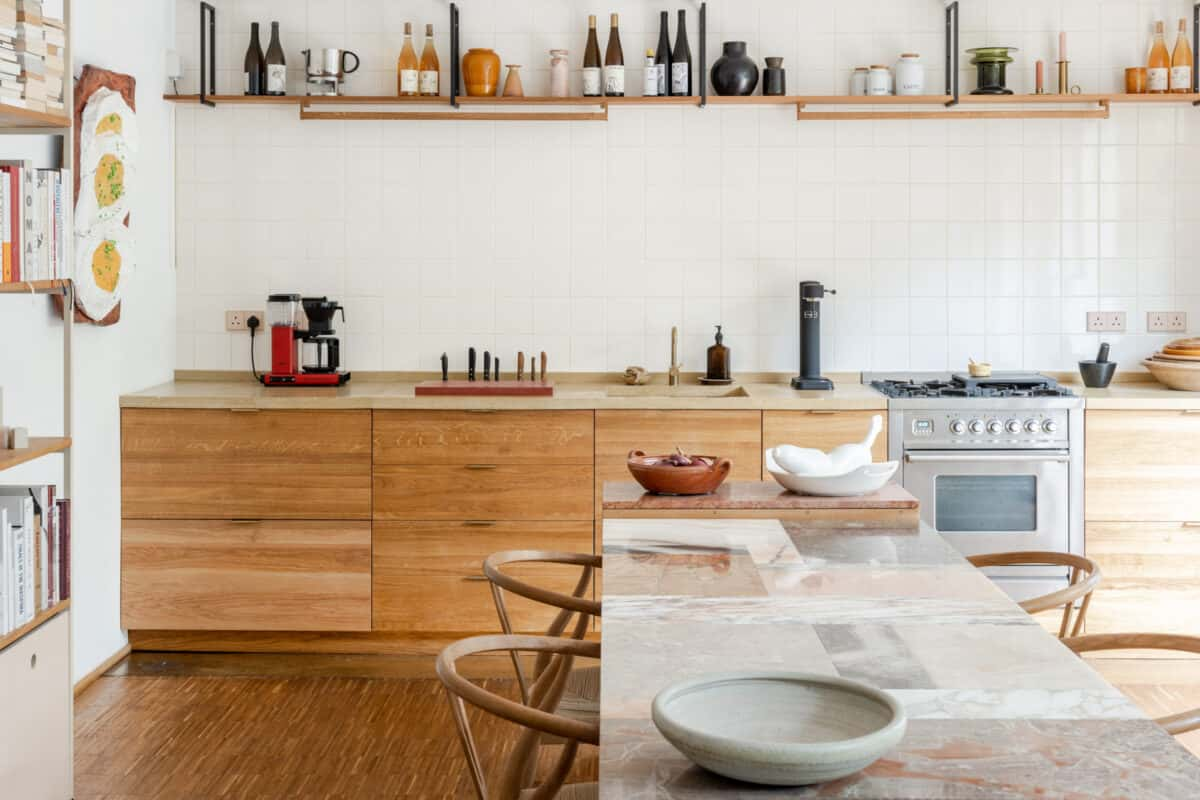
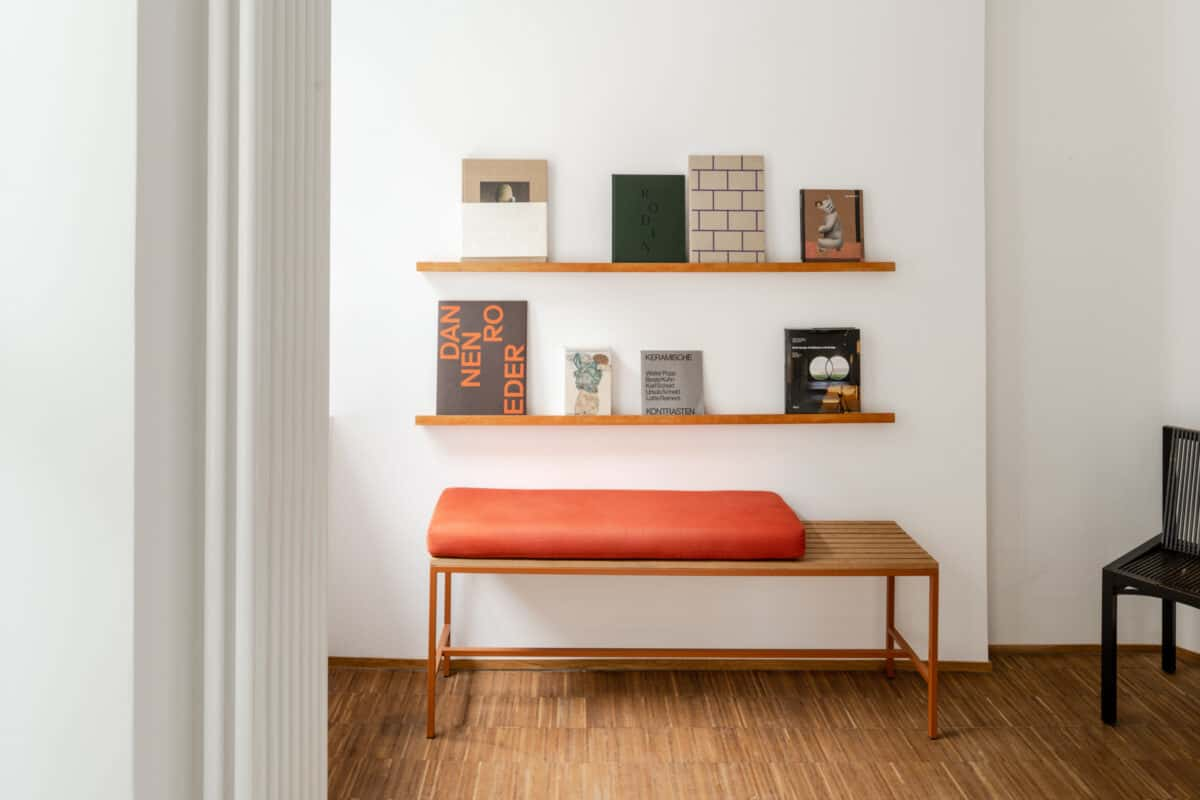
Stefan: “We are moving to Copenhagen, but we actually don’t think we need much more space than we have here. We will start renting for now and take some time to explore the area before we find a new project. We’re not architects, but recently we’ve been playing with the idea of building something from scratch. That would give us an opportunity to create a sustainable home from the outset…”
Mia: “Whether we live in the city or the country, we want to invite nature into our home. We are also very social as a family and we love hosting, so we’ll always want a warm, welcoming space. But as well as creating one that encourages people to bring their own energy, it will need to be a calm, safe space for ourselves to enjoy too.”
